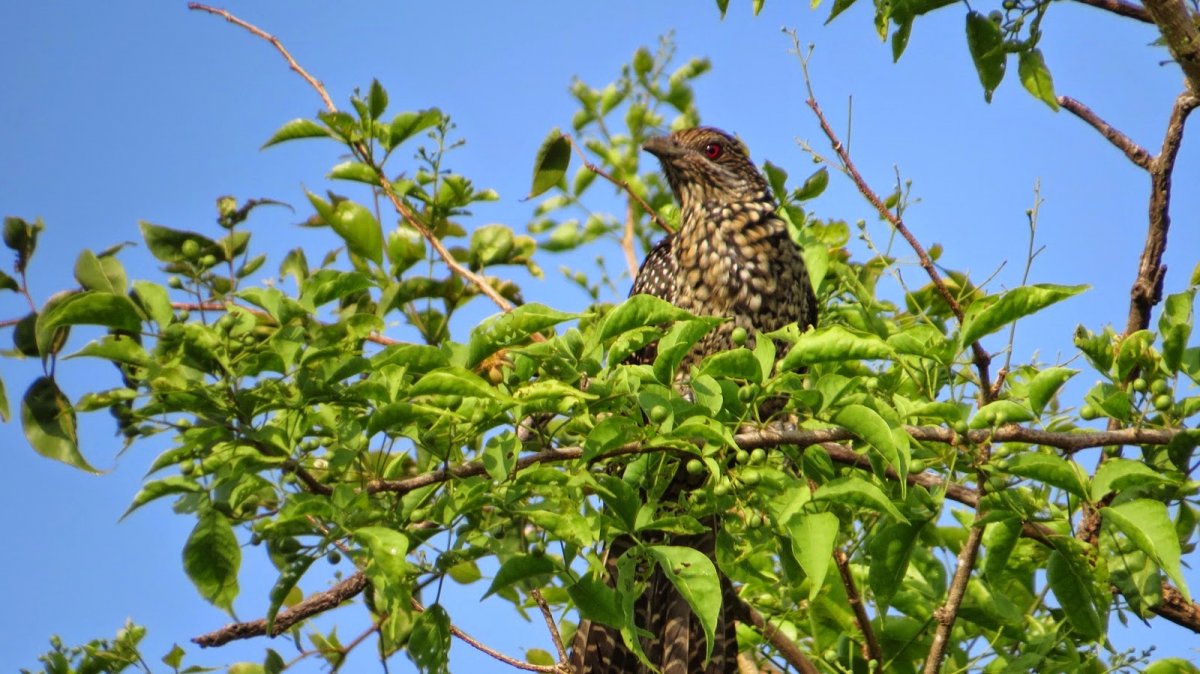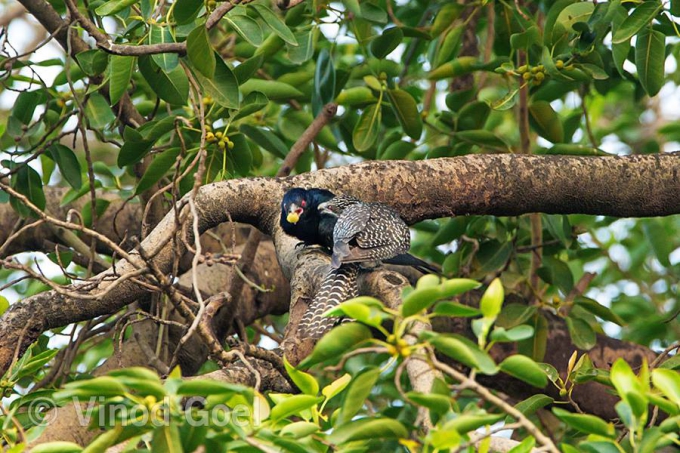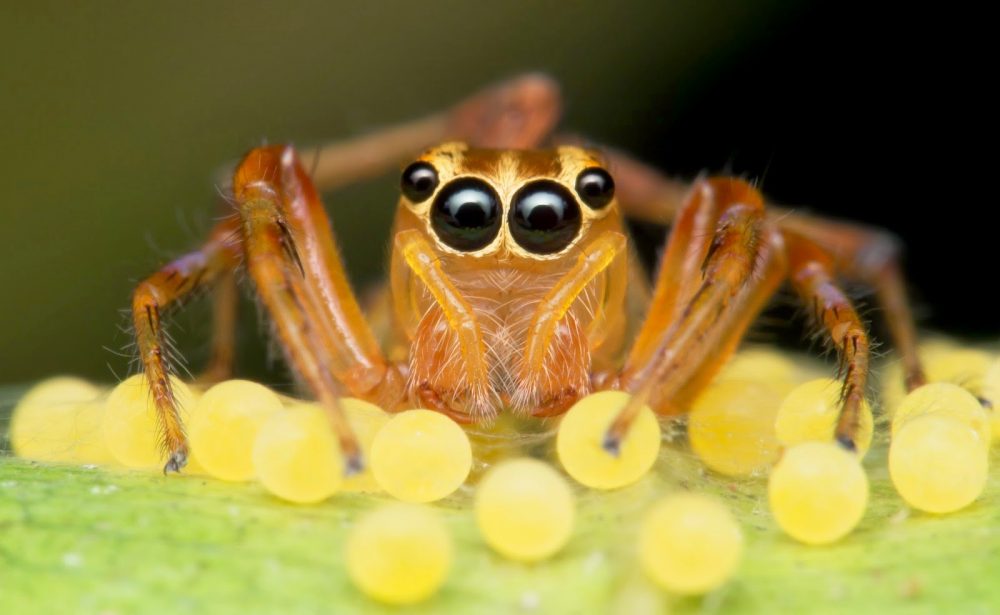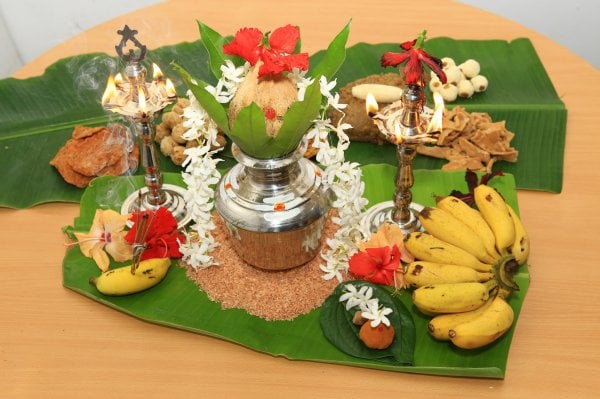
The call of the Asian koel (Eudynamys scolopaceus)—better known as the koha in Sinhalese—was traditionally believed to be a sign of the upcoming Sinhalese and Tamil New Year. However, the pleasant calls made by the male Asian koels during the warm days of the month of April, are actually mating calls, for the mating season of these birds coincides with the New Year festivities.
How to spot an Asian Koel

The search for a mate: aside from its mating call, the male Asian koel engages in a courtship ritual where it offers small fruits to a female. Image credit wildnest.in/Vinod Goel
The Asian koel, belongs to an order of birds called Cuculiformes. Other species of birds like the European cuckoo, coucal, and malkoha are also classified as Cuculiformes.
Shy by nature, the Asian koel prefers to linger among the branches of trees and small bushes. It is only during the breeding season that this bird draws any attention to itself through its mating call.
Environmental Lawyer Jagath Gunawardana told Roar Media that the Asian koel’s elusive nature is one reason why many people mistakenly think that it is a migratory bird which visits Sri Lanka during the avurudu season from India and other South Asian countries.
“It is actually a resident bird—not a migratory one—and [right now] it is one of the most common birds in Sri Lanka,” he said.
The male of the species has a physical appearance which is quite similar to that of the common crow—it is a bird of average size, with glossy black feathers, a black beak, and bright red eyes.
The females of this species, too, have black beaks and red eyes. Apart from this, there is little similarity between the male and females, with mottled brown and greyish-white feathers covering the body of the female koel.
These birds can be spotted in pairs, and while each pair does have a small territory of its own, unlike certain other species of birds they are not strictly territorial. If another male does invade its territory, the Asian koel will open its mouth wide and utter a series of loud, harsh bird calls to defend its female.
Changing habits

The Asian koel, is what is known as a nest parasite or ooparasite. It lays its eggs in the nests of house crows, and it is the crows who feed and raise the young Asian koels. Image courtesy birdsindelhi.blogspot.com
Gunawardana also told Roar that the Asian koel is an ‘ooparasite.’ In simpler words, it is a bird which lays its eggs in nests made by other birds, and does not build a nest of its own.
According to the book A History of the Birds of Ceylon (1880), which was written by 19th-century ornithologist William Vincent Legge, the Asian koel’s habitat—at that time—were the lowcountry areas of the island where it could lay its eggs in the nests of the jungle crow.
Gunawardana pointed out that over time the habitats of the Asian koel have changed; it is a bird which can now be found in other areas of Sri Lanka like the hill country region. It does, however, prefer to live in urban and suburban areas and lay its eggs in the nests of the common house crow.
“A wider presence of the Asian koel in urban and suburban areas [indirectly] shows that there has been an increase in the amount of garbage waste that is being disposed in these areas,” said Gunawardana.
When garbage is improperly disposed of in certain residential or industrial areas, it attracts many stray dogs, cats, and crows—an increase in the crow population of these areas also draws in a large number of Asian koels, who wait to lay their eggs in the nests of the unsuspecting crows.
“The Asian koel has a long drawn mating season which depends on the breeding pattern of the crow,” said Gunawardana. “Sometimes crows breed up to three times a year—not just in the months of March and April,” he added.
Gunawardana, who has observed the behavior of Asian koels and their young for the nearly four decades, revealed that this year the breeding season of the bird began in late January, which was when the first few mating calls were heard. During the breeding season, the female Asian koels lay two or more eggs in each crows nest that she visits.
It is a common misbelief that the fledglings of this bird peck at and even push the young crows out of the nests, causing them starve and perish, but in reality, the young crows and Asian koels are peaceful nestmates who feed and grow together.
“There may be occasions where the young crows may accidentally fall out of the nests because of a lack of space, but even in these cases the parent crows would still be able to feed and take care of the fallen young birds,” said Gunawardana.
While the Asian koel is a frugivorous bird, which mainly feeds on fruits, insects and the eggs and young of small birds, in the recent past it has also adapted to feed on household food waste.
“In spite of its shy nature, over the past few decades this bird has adapted to urbanisation,” said Gunawardana.
Which is another reason why there has been an increase in the number of Asian koels in the cities and surrounding areas. While in the past Sri Lankans believed that the melodious calls of the Asian koel meant that the dawn of the Sinhalese and Tamil New Year was near, right now these increasingly heard bird calls have a much less pleasant significance. As Gunawardana revealed, the increase in the population of these birds in and around our cities highlights that the amount of garbage disposed of in these areas is on the rise, and should be taken care of as soon as possible.
Featured image courtesy safari-srilanka.blogspot.com





.png?w=600)


